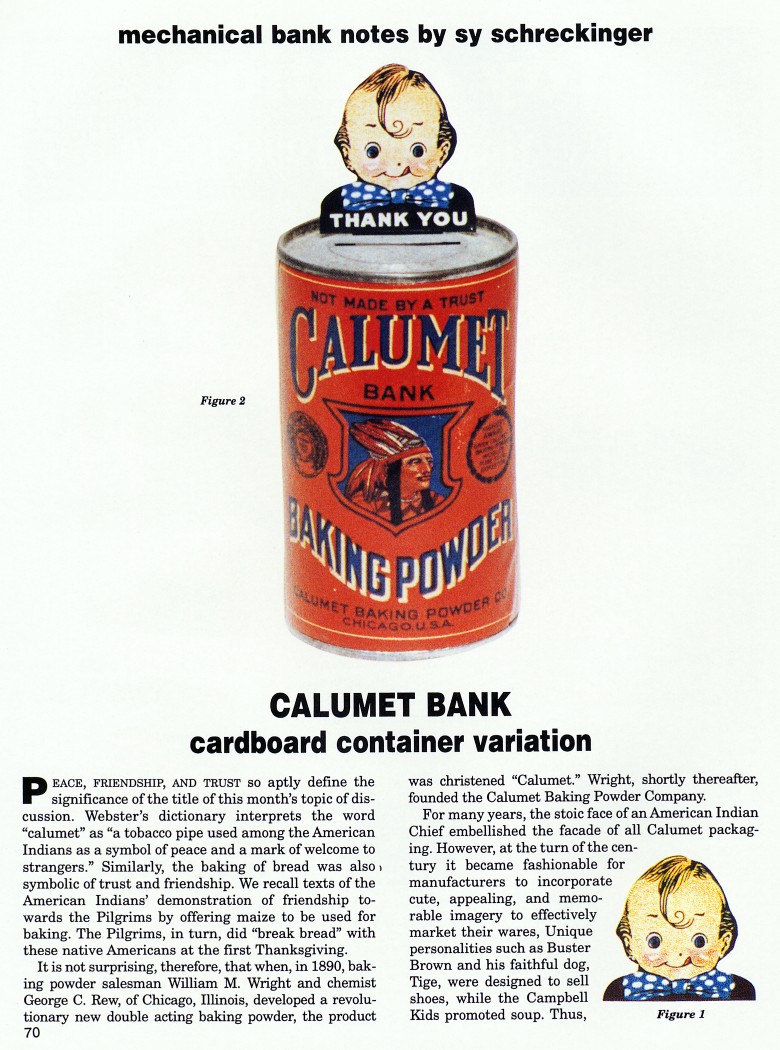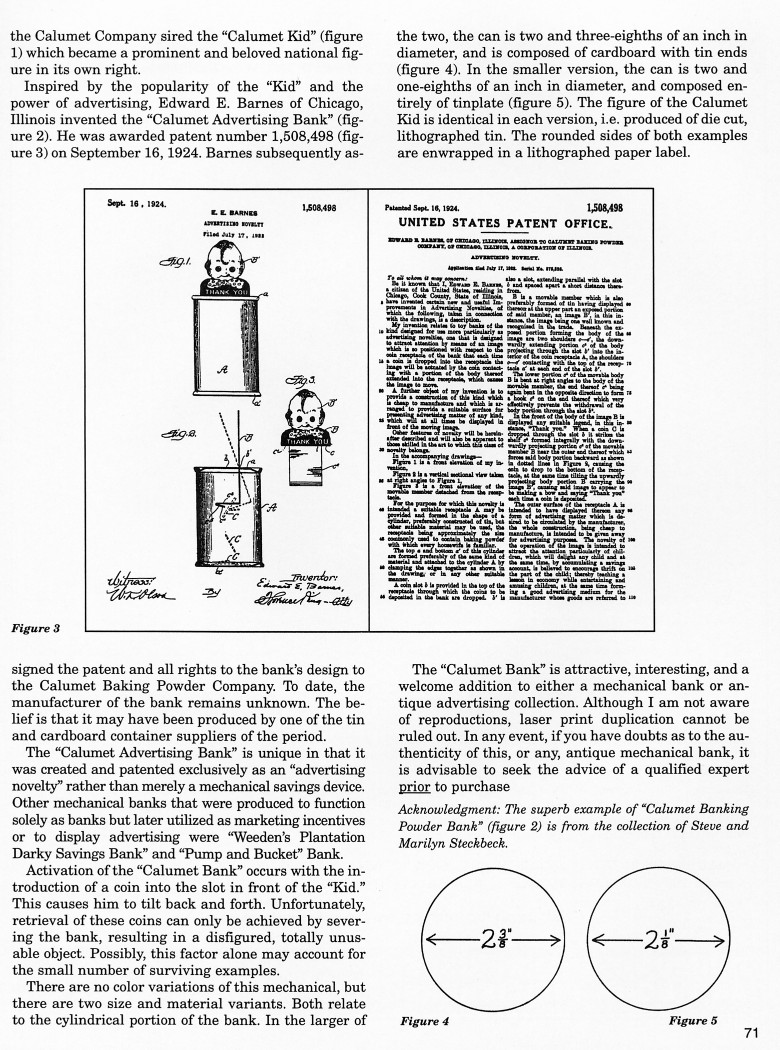|
Calumet Bank
cardboard container variation
by Sy Schreckinger – ANTIQUE TOY WORLD Magazine – June, 1998
Peace, friendship, and trust so aptly define the
significance of the title of this month's topic of discussion. Webster's
dictionary interprets the word "calumet" as "a tobacco pipe used among the
American Indians as a symbol of peace and a mark of welcome to strangers."
Similarly, the baking of bread was also, symbolic of trust and friendship.
We recall texts of the American Indians' demonstration of friendship
towards the Pilgrims by offering maize to be used for baking. The
Pilgrims, in turn, did "break bread" with these native Americans at the
first Thanksgiving.
It is not surprising, therefore, that when, in 1890, baking powder
salesman William M. Wright and chemist George C. Rew, of Chicago,
Illinois, developed a revolutionary new double acting baking powder, the
product was christened "Calumet." Wright, shortly thereafter, founded
the Calumet Baking Powder Company.
For many years, the stoic face of an American Indian Chief
embellished the facade of all Calumet packaging. However, at the turn of
the century it became fashionable for manufacturers to incorporate cute,
appealing, and memorable imagery to effectively market their wares, Unique
personalities such as Buster Brown and his faithful dog, Tige, were
designed to sell shoes, while the Campbell Kids promoted soup. Thus, the
Calumet Company sired the "Calumet Kid" (figure 1) which became a
prominent and beloved national figure in its own right.
Inspired by the popularity of the "Kid" and the power of advertising,
Edward E. Barnes of Chicago, Illinois invented the "Calumet Advertising
Bank" (figure 2). He was awarded patent number
1,508,498 (figure 3) on
September 16, 1924. Barnes subsequently assigned the patent and all rights
to the bank's design to the Calumet Baking Powder Company. To date, the
manufacturer of the bank remains unknown. The belief is that it may have
been produced by one of the tin and cardboard container suppliers of the
period.
The "Calumet Advertising Bank" is unique in that it was created and
patented exclusively as an "advertising novelty" rather than merely a
mechanical savings device. Other mechanical banks that were produced to
function solely as banks but later utilized as marketing incentives or to
display advertising were "Weeden's Plantation Darky Savings Bank" and
"Pump and Bucket" Bank.
Activation of the "Calumet Bank" occurs with the introduction of a
coin into the slot in front of the "Kid." This causes him to tilt back and
forth. Unfortunately, retrieval of these coins can only be achieved by
severing the bank, resulting in a disfigured, totally unusable object.
Possibly, this factor alone may account for the small number of surviving
examples.
There are no color variations of this mechanical, but there are two
size and material variants. Both relate to the cylindrical portion of the
bank. In the larger of the two, the can is two and three-eighths of an
inch in diameter, and is composed of cardboard with tin ends (figure 4).
In the smaller version, the can is two and one-eighths of an inch in
diameter, and composed entirely of tinplate (figure 5). The figure of the
Calumet Kid is identical in each version, i.e. produced of die cut,
lithographed tin. The rounded sides of both examples are enwrapped in a
lithographed paper label.
The "Calumet Bank" is attractive, interesting, and a welcome addition
to either a mechanical bank or antique advertising collection. Although I
am not aware of reproductions, laser print duplication cannot be ruled
out. In any event, if you have doubts as to the authenticity of this, or
any, antique mechanical bank, it is advisable to seek the advice of a
qualified expert prior to purchase.
Acknowledgment: The superb example of "Calumet Banking Powder Bank"
(figure 2) is from the collection of Steve and Marilyn Steckbeck.
|


